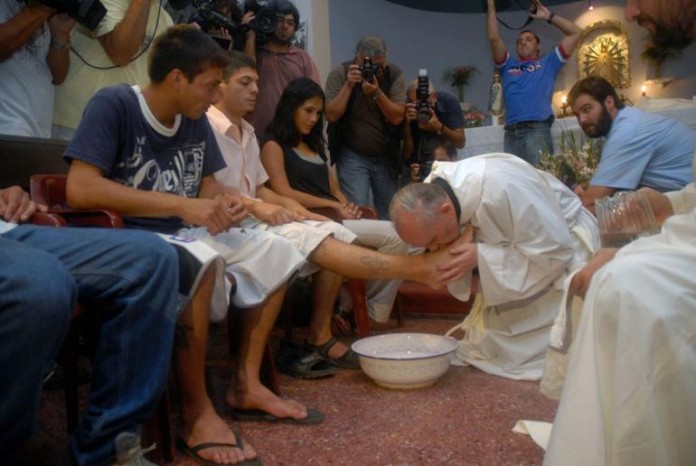Francis: Portrait Of A Pope, Part Two
Utah’s Bishop John Wester, who knows Pope Francis personally, says that the pope is speaking in symbols which are designed to make the Roman Catholic Church more approachable to catholics and non-catholics alike.
One example, rather than washing the feet of a priest as part of an annual ritual, the pope visited a prison to wash the feet of inmates, including an atheist and a Muslim. “That’s a very symbolic action,” said Wester. “He was saying that the church reaches out to all people, the church cares about everybody.”
The ritual takes place on Holy Thursday (the Thursday before Easter) and represents Jesus Christ washing the feet of the Apostles. Wester went on to explain that the pope was telling us that it isn’t just those that are “hand-picked” because they are good catholics that matter.
“Christ went to everybody,” said Wester. “To the masses, to the people, the sinners, those that were looked down upon, those that were on the periphery. And He ate with them, and He socialized with them. That says to me that the pope is the vicar for Christ, that he’s doing what Christ would do.”
[one_fourth]
[/one_fourth][three_fourth_last]
Bishop Wester said that the doctrines, teachings and reevaluations of the church remain intact. If anything has changed, he says “It’s the tone, the attitude, the approach.” Wester went on to say that in certain instances, you could say that the church talks first, but Pope Francis listens first. Wester shared an example of a man who wrote to Pope Francis because he had some problems, and Pope Francis wrote back and said “come see me.”
And he emphasizes that it wasn’t just a one-time incident, and the the pope calls people on the phone and asks people how they are doing, and wants to listen.
Wester believes that is why Pope Francis chose to live in Casa Sancte Martae, a suite in the the Vatican guest house, instead of moving into the papal apartments inside the Vatican. “My impression is that the Holy Father does want to live simply,” Wester said. “He did in Argentina, in Buenos Aires.”
Wester smiled as he added that he had it on good authority from people who work inside the Vatican that another reason to consider is that the pope wants to be with people. “He doesn’t want to be isolated,” said Wester. “Because when you’re in the Papal Palace, you’re isolated, and you’re not hearing what the people are thinking, and what they’re saying.”
In Casa Sanctae Martae, there are other people living there, coming and going. “It’s not just to symbolize poverty,” said Wester. “It’s also to be in touch with people.
In Part Three of our series, we will explore the pope’s commitment to reform, and his controversial choice to replace the leaders at the Vatican with those who share his vision.






